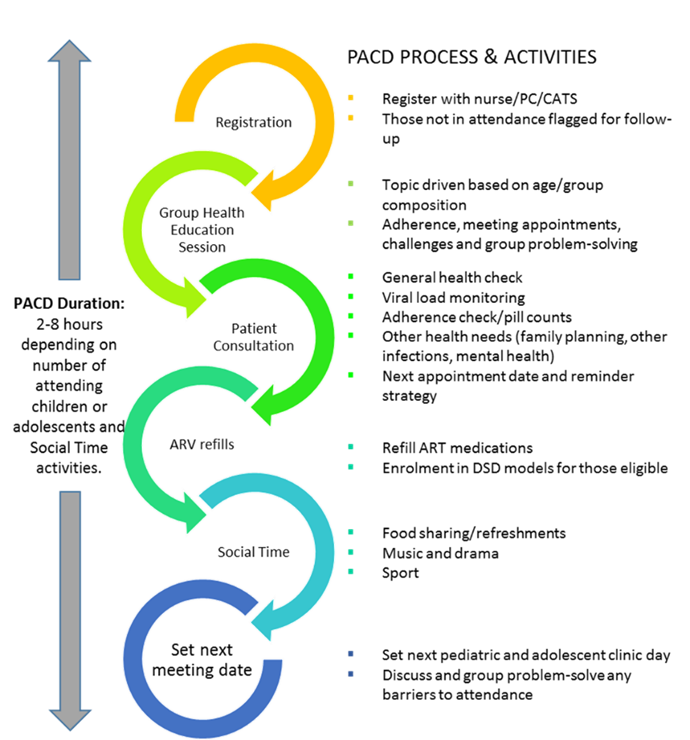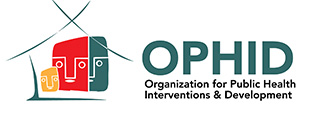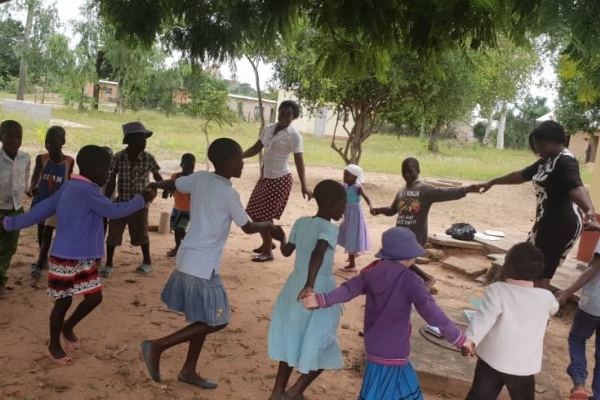The Challenge
High viral load among people living with HIV results in increased risk of transmission of the virus and poor health outcomes. OPHID program data show that children and adolescents have poor viral load test coverage, and the lowest rates of viral suppression of all age categories. Development of differentiated HIV services that cater to the needs of children and adolescents are key to achieving targets, yet effective systems for scaling up in low resource settings are required.
Our Initiative
Development of differentiated HIV services that cater for the needs of the children and adolescents are key to achieving targets yet identifying effective systems for scaling up in low resource settings are required. Adult expert clients living with HIV and health care workers supported by USAID clinical partner OPHID and Community ART Treatment Supporters (CATS) supported by community partner Africaid have collaborated together to develop an effective Pediatric and Adolescent Clinic Days (PACD) system at Muzokomba clinic in Buhera District that is yielding results.
Results and Impact
A PACD Case Study identified three key ingredients for success of the model:
1) Providing age appropriate care to different groups of children and adolescents living with HIV on specified clinic days, the age groups which could clearly be broken down to 0-9 years, 10-14 years and 15-24 years including young pregnant and/ breastfeeding mothers aged between 10-24
2) Collaboration between facility health workers and adult and adolescent expert clients to plan and implement PACDs
3) Defined processes and roles for PACD activities which involved the registration of the patient, health discussion sessions( figure 2) where which also involved peer to peer mentorship, clinical consultations and VL sample collection, ART refills, social networking and dismissal with a next review date for the children and adolescent.
PACDs collaboratively supported by USAID partners not only improve clinical and social support for children and adolescents living with HIV in Buhera, and their caregivers, they are also driving program performance and improving health outcomes. Data for children and adolescents currently in care at Muzokomba clinic demonstrated viral load test coverage of 91% and a viral supression rate of 96%.

Conclusions and Next Steps
The theme for PEPFAR’s 15th anniversary observance is “15 Years of Saving Lives Through American Generosity and Partnerships” because, since its inception, PEPFAR has put partnerships at the centre of its work. The collaborative Pediatric and Adolescent Clinic Days (PACD) model among PEPFAR/USAID partners, Ministry of Health and Child Care, adult and adolescent expert patients, communities and caregivers embody this ethos and provide evidence of its impact. The pragmatic processes documented for PACD have been packaged for adaptation by other health facilities to optimise impact of USAID-support in Zimbabwe to reach 95-95-95 among children and adolescents. Findings have been also shared and informed Ministry of Health and Child Care guidelines for health care workers for strengthening adolescent transitions in HIV care and treatment in Zimbabwe.


